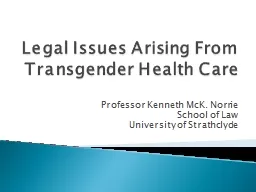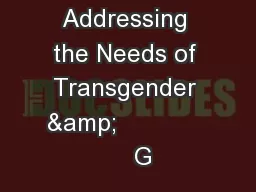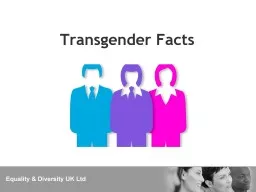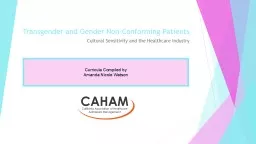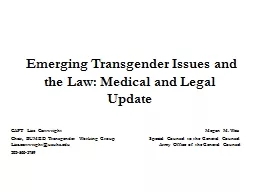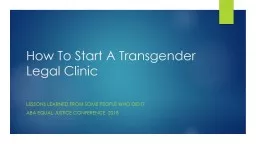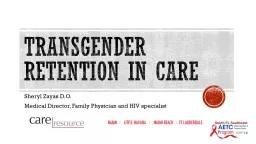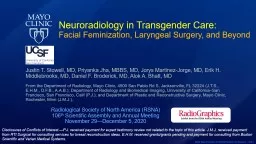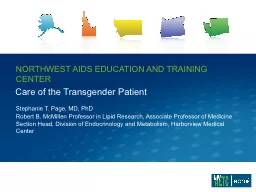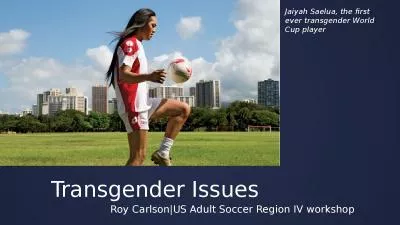PPT-Legal Issues Arising From Transgender Health Care
Author : tawny-fly | Published Date : 2016-06-28
Professor Kenneth McK Norrie School of Law University of Strathclyde Gender Recognition Act 2004 c 7 S 9 Gender Recognition Certificate GRC Exceptions include
Presentation Embed Code
Download Presentation
Download Presentation The PPT/PDF document "Legal Issues Arising From Transgender He..." is the property of its rightful owner. Permission is granted to download and print the materials on this website for personal, non-commercial use only, and to display it on your personal computer provided you do not modify the materials and that you retain all copyright notices contained in the materials. By downloading content from our website, you accept the terms of this agreement.
Legal Issues Arising From Transgender Health Care: Transcript
Download Rules Of Document
"Legal Issues Arising From Transgender Health Care"The content belongs to its owner. You may download and print it for personal use, without modification, and keep all copyright notices. By downloading, you agree to these terms.
Related Documents

